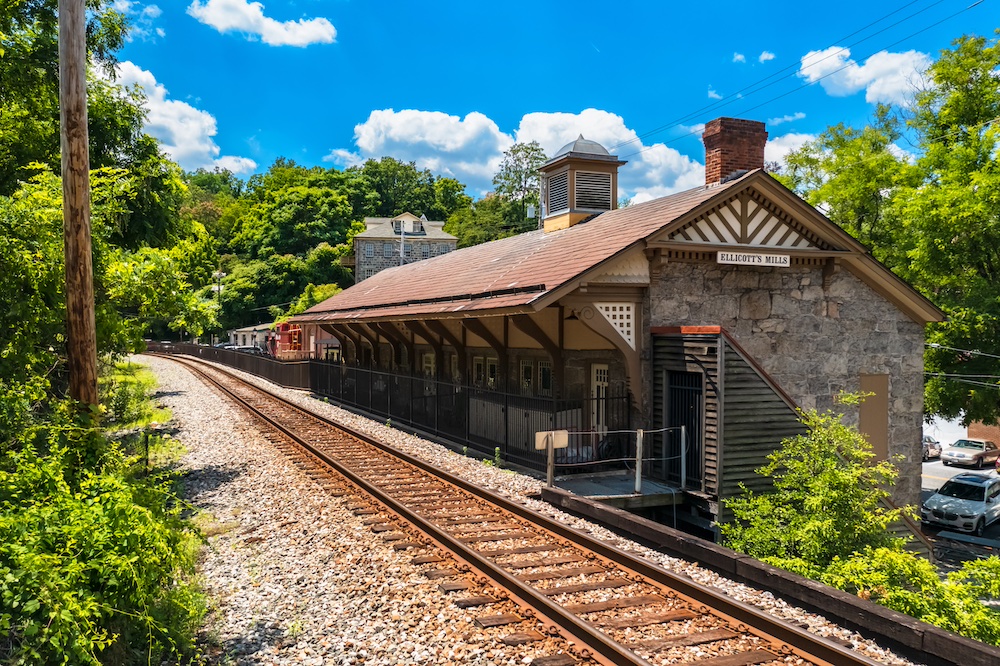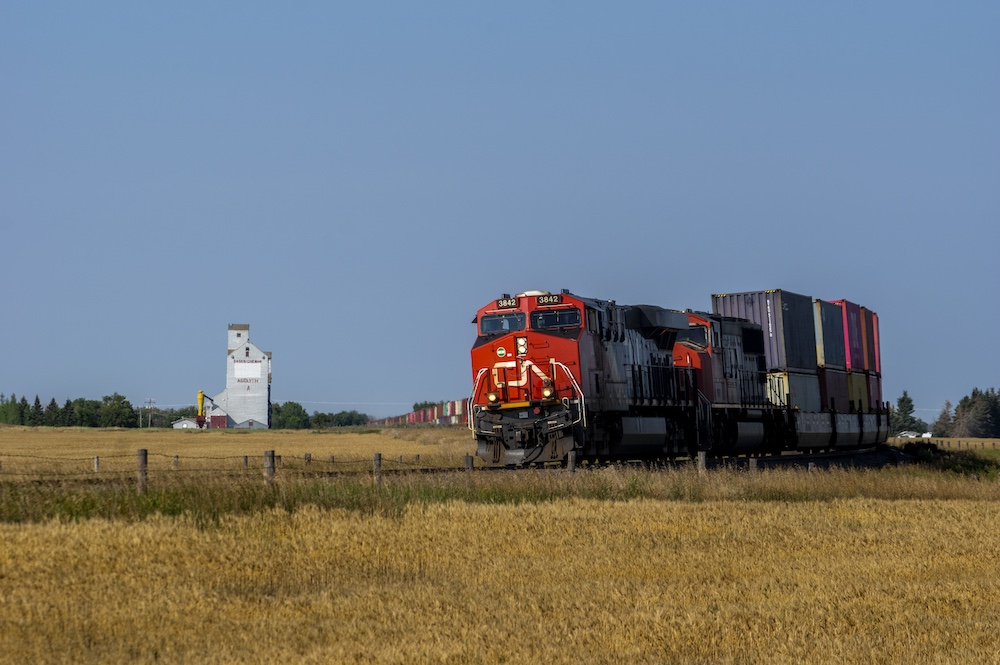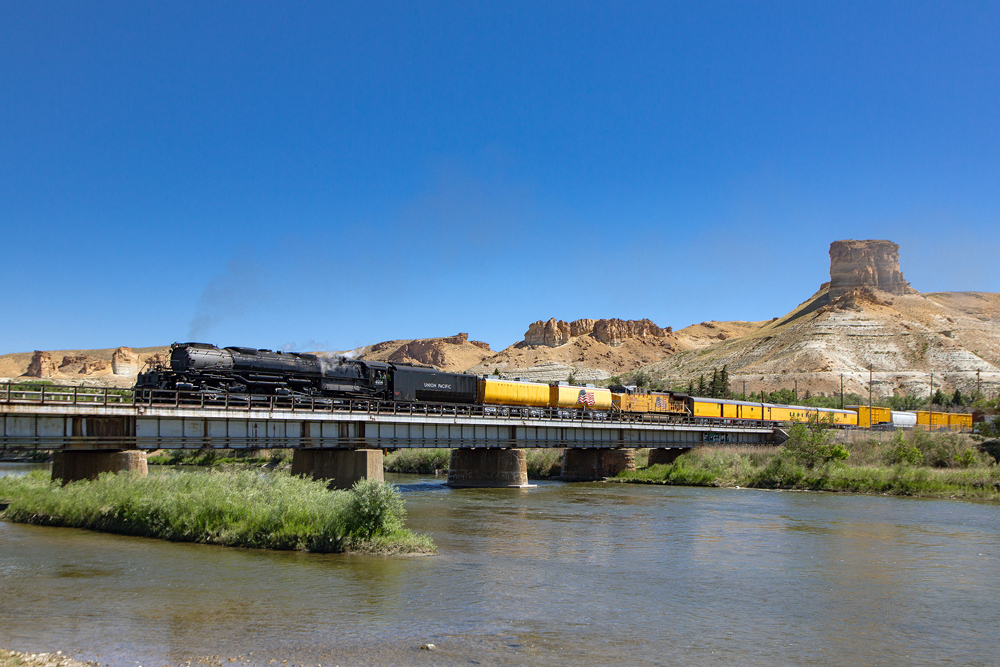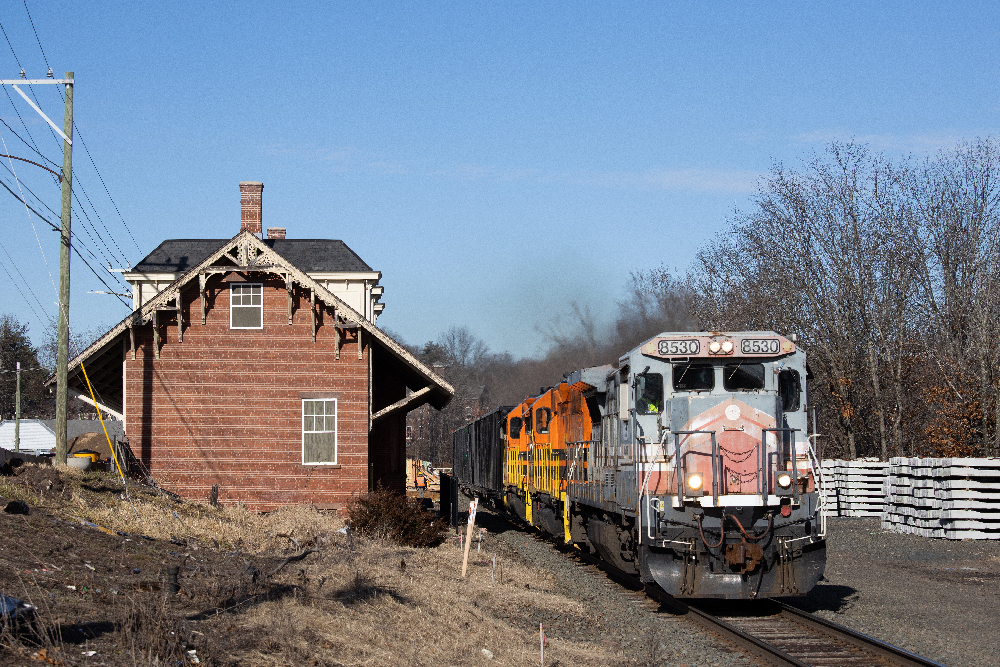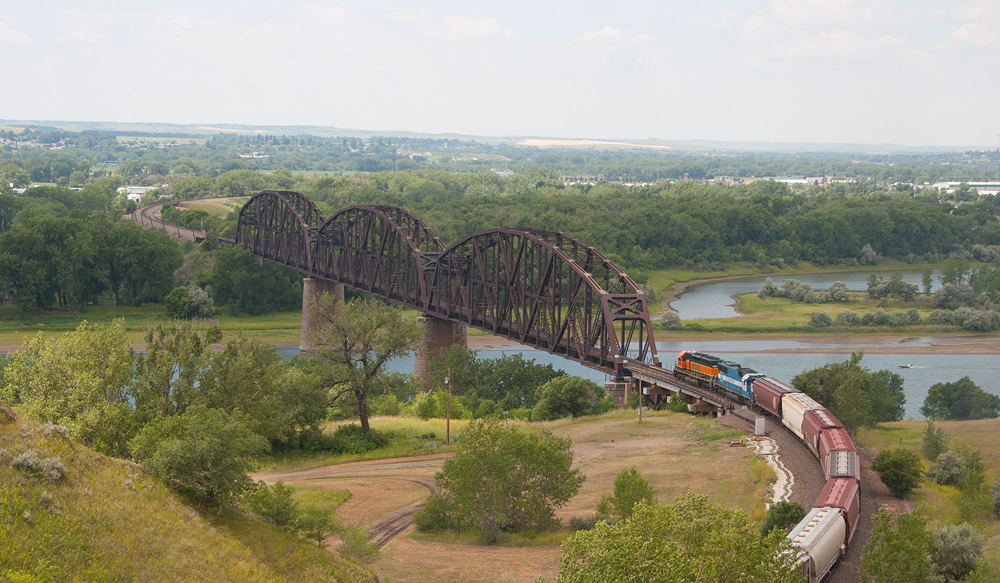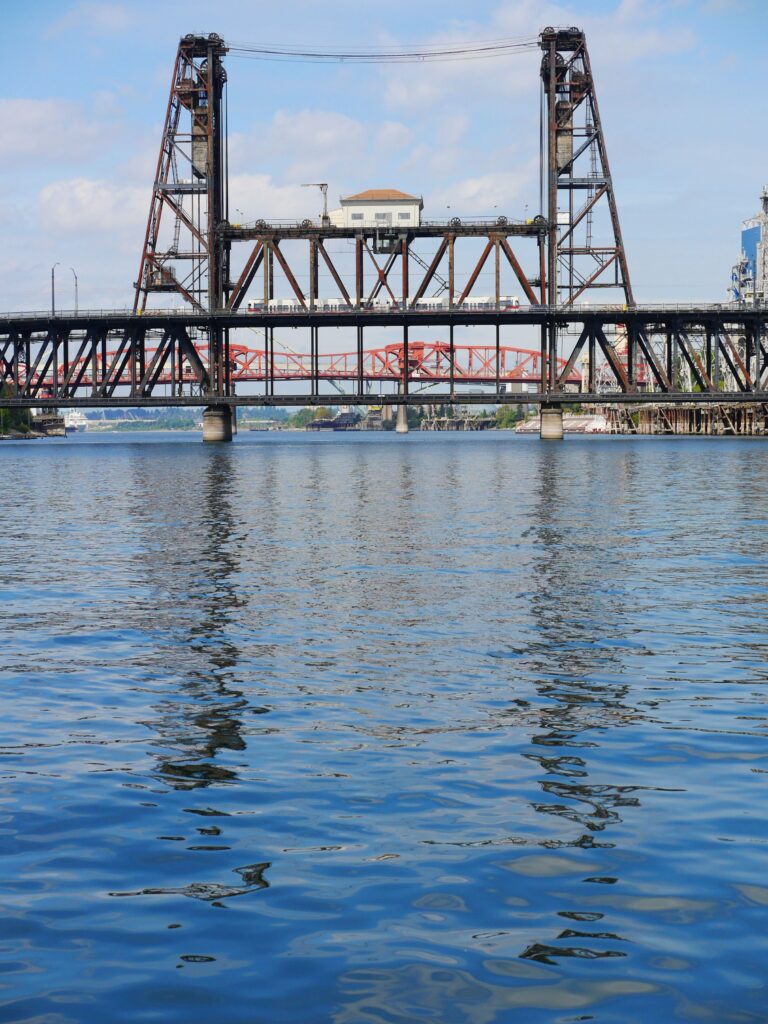
Portland day-trip rail experience: In the coastal Pacific Northwest, a Portland day-trip rail experience is easy enough that you can leave your vehicle at your local train station, and not think about automobiles for the rest of the day. With all Amtrak corridor and long-distance trains calling on Portland, Oregon one can usually find a train that will arrive in the early morning with return trips available to your destination in the afternoon or evening.
The Amtrak Cascades corridor stretches from Eugene, Ore., to Vancouver, British Columbia. Taking my trek for this Portland day-trip rail experience will be the first train of the day south from Seattle, Cascades 503. Arriving at the depot in Centralia, Wash., about 30 minutes prior to departure, the freight traffic on BNSF Railway was heavy with both a northbound coal train and southbound manifest rumbling through.
With Amtrak 503 arriving just a few minutes late, two doors opened on the Talgo Series 8 sets, the Conductor yelling “all aboard,” urging a quick station stop. One open car was for Business Class while mine welcomed me to coach seating about the middle of the train.
While finding an open seat, the train was on the move south before I could even stow my gear. Speed clicking up, the conductor came through the cars inspecting tickets-both paper and electronic-all the while keeping in direct contact with the engineer over the radio simultaneously.
“Tickets please, tickets – where are you going to?” he asked inspecting the e-ticket.
“Amtrak 503, diverging clear Centralia south,” crackles the engineer on the radio. “Diverging clear,” the conductor acknowledges while in the middle of writing a “hat check” that he placed over my seat. “PDX” is all the slip said, others in the car were listed as “KEL” or “VAN” or even an “SLM” or “EUG”. It’s these small pieces of paper which allow at a quick glance where their passengers will disembark from the train.
The small urban areas of Centralia and Chehalis, Wash. are quickly traded for curving track, the grade of Napavine Hill, Wash., and the small towns that dot the line southbound towards Portland. As this is a two-track heavy main line, it seems we’ve met a train in the opposite direction every 15 minutes or so.
At Vader, Wash., we met the northbound counterpart to our train as Amtrak Cascades 500 zips by us at track speed. From the coach seat, passing another Amtrak train at track speed is an exciting moment as the near 150-mph-plus combined closing speed can easily flash by the window if you aren’t prepared.
Peering out through the rain-streaked windows, there are several places where the mainline parallels Interstate 5, highlighting our train being much faster than the traffic. There is always a sense of satisfaction when you can zip by in the comfort of a passenger car, leaving the “driving” to someone else.
Continuing south, we trade the Columbia River shoreline for urban growth and industry of Vancouver, Wash. Tiptoeing through and around parked freight traffic in this large terminal, usually well planned out with a route lined by the dispatcher well in advance for the arrival of Amtrak trains. Today is no exception with only a short wait before making our scheduled station stop. The Amtrak depot in Vancouver is situated within a wye, providing a major connection to both the Seattle and Fallbridge Subdivisions. Nearly 100 rail-movements per day can occur through this terminal with all the additional motive power, switch moves and locals, as well as the 60-plus road freight per day that all pull within view of the depot.
Off the south end of the Vancouver depot is the approach to the Columbia River swing span bridge that connects the line into Oregon. A similar bridge over the Oregon Slough is crossed before reaching the Willamette River draw bridge that places the main lines on the west side of the river for the final run skirting the many rail yards before reaching Portland.
Portland Union Station is a major hub for rail and transit in the city where one can connect to multiple modes of transportation to get around. The light rail and streetcar boom is alive and well with the extensive Metropolitan Area Express (MAX) system and the Portland Streetcar you can board just a block or so away from the station.
With Portland boasting a rich and vibrant rail history, a featured stop is the Oregon Rail Heritage Center, located in East Portland near the Oregon Museum of Science and Industry. The center can be reached via multiple transit routes. The MAX Orange Line connects from nearby Union Station for a 30-minute ride through downtown and over the Willamette River. Having taken the line before, I opted for the Portland Streetcar which boards a block north of Union Station and takes me east over the Broadway Bridge, then south to the center.
Home to steam locomotives Southern Pacific 4-8-4 No. 4449; Spokane, Portland & Seattle 4-8-4 No. 700; and Oregon Railroad & Navigation 4-6-2 No. 197, the Oregon Rail Heritage Center should be on any ultimate railfan bucket list when visiting Portland. Visitors can get up close, and in some cases, tour the inside cabs of the historic locomotives housed inside. The newest acquisition to the steam collection is the Mt. Emily Lumber Company No. 1, a three-truck Shay geared locomotive, which has drawn quite the following since its arrival.
A Portland tradition since 2005, the foundation of the ORHC runs the annual Holiday Express on the Oregon Pacific Railroad south to Oaks Park and return. Both Nos. 4449 and 700 have headed these excursions in the past, but in 2022, the organizers used Polson Logging Company 2-8-2 steam locomotive No. 2. The No. 1 is planned to operate all steam excursions on the OPR going forward.
As always, a visit to the center passes quickly with so many things to see, photograph, and enjoy. It was time to take a streetcar back to Union Station for my evening return trip north on Amtrak Cascades 508. The murky day had given way to cold rain and wet roads as the streetcar bumped its way along, watching for the evening traffic and pedestrians.
Back at Union Station, the evening rush was there with the arrival of Amtrak’s Coast Starlight 14 and the departure of Amtrak’s Empire Builder 28. Afternoons can get busy with the station full of passengers going to or from their destinations. Regular train and safety announcements keep us occupied over the loudspeaker as we await our train’s arrival. After the two long-distance trains departed, Union Station quickly returned to quietness as we saw the same crew that brought our train south this morning, readying the return trip to Seattle.
A quick exchange of pleasantries aside with the crew as I was seated aboard and waited for departure. Amtrak 508 pulled out of Portland Union Station northbound, right on time. The return trip was in darkness, but what was still very much evident was the congested freight traffic that the train worked its way through.
Two hours later, we were making a slow roll into the depot at Centralia where I hopped off and headed back to my vehicle for the short drive home. Just like my departure southbound, the northbound only made a brief stop for a few of us to disembark. I barely made it off the footbox when the train sounded its highball and was ready to go!
One can see how easy a Portland day-trip rail experience is while leaving the car at home. Getting there via Amtrak can also be half of the fun for a day trip to enjoy some train action for those living in the coastal Pacific Northwest. It’s easier than you think when you leave the traveling to Amtrak and other forms of flanged wheels.





